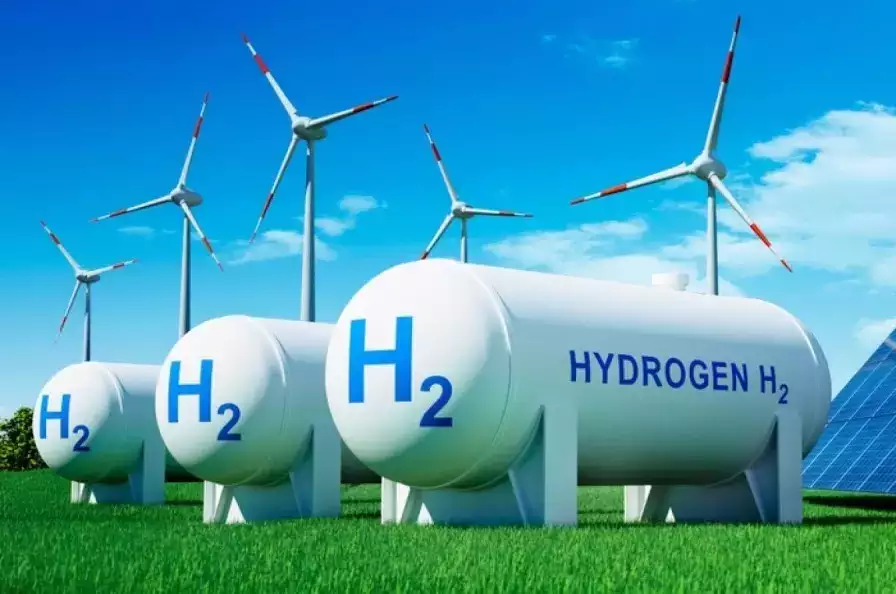India could cut 6.3 MMT CO₂ emissions by 2035 with green hydrogen shift: Report

India’s refineries currently consume around 2.7 MMT of hydrogen annually, all produced via steam methane reforming, resulting in about 24 MMT of CO₂ emissions. The report emphasizes that shifting even a portion of this to green hydrogen would significantly cut emissions, positioning green hydrogen as a pivotal tool in India’s decarbonisation efforts.
Blending green hydrogen with city gas distribution networks is also gaining traction, though cost remains a major barrier. Green hydrogen is priced at $6–7 per kg, nearly four times the cost of grey hydrogen, which stands at around $1.5 per kg. The Indian government’s Strategic Interventions for Green Hydrogen Transition (SIGHT) program aims to address this cost gap, targeting the production of 5 MMT of green hydrogen by 2030. To date, oil and gas companies have committed to developing around 2.1 MMT of green hydrogen capacity, expected to be operational by 2030.
“India’s journey to Viksit Bharat must balance high growth with sustainability. Besides renewable energy integration into the industrialisation process, green industrialisation and manufacturing require new technologies and fuel sources to make the manufacturing process cleaner. Businesses in India have a huge opportunity to proactively integrate green technologies into their operations on a cost-competitive basis, thereby gaining a significant advantage as global supply chains transition towards sustainability,” said Rajiv Memani, Chairman and CEO, EY India.
Decarbonisation strategies and the role of CCUS
The report also identifies Carbon Capture, Utilisation, and Storage (CCUS) as an essential strategy for mitigating emissions, particularly in hard-to-abate sectors like steel, cement, and oil and gas. While CCUS technology is still evolving in India, leading oil and gas companies have already made strategic investments. Scaling up CCUS will be critical to achieving India’s net-zero targets, especially given the projected growth in industrial activity.
“A sector-specific approach to decarbonisation is essential to achieving net-zero emissions. Even as India is actively pursuing targeted strategies across various industries, strengthening CO₂ reduction targets, scaling up green hydrogen, unlocking climate investments, and robust public-private collaboration are key steps in shifting to sustainable industrialisation while ensuring energy security and long-term competitiveness,” said Kapil Bansal, Partner, Energy Transition and Decarbonisation, EY-Parthenon India.
India’s emissions projections and policy recommendations
The report projects that emissions from hard-to-abate sectors such as steel, cement, and power could reach up to 2 gigatons of CO₂ annually by 2040 without proactive decarbonisation measures. Currently, steel production accounts for 12% of India’s greenhouse gas emissions, cement contributes 6%, and the power and utilities sector represents 5.2%.
To counter this, EY recommends strengthening CO₂ reduction targets, introducing tax incentives for green initiatives, and establishing a robust carbon pricing mechanism, targeting $100 per tonne of CO₂ by 2040. The report also advocates for viability gap funding to make green hydrogen cost-competitive and increased investments in research and development for clean technologies.
The report estimates that India will require approximately $300 billion in climate-related investments to support green manufacturing and decarbonisation initiatives. Government and industry collaboration will be crucial to achieving these targets, with a focus on building low-carbon infrastructure in sectors like automotive, manufacturing, and energy.
Energy growth and the decarbonisation challenge
India’s economic growth trajectory, with GDP projected to reach $7 trillion by 2030, will significantly increase energy demand. According to the 20th Electric Power Survey, India’s peak electricity demand is expected to reach 366.4 GW by 2031-32, driven by industrial expansion, population growth, and the increasing energy needs of emerging technologies like artificial intelligence.
Without comprehensive decarbonisation strategies, emissions from key sectors could nearly double as production capacities expand. The report emphasizes that while India has made significant progress in green manufacturing, accelerated efforts from both the government and industry are necessary to meet sustainability goals.
A defining period for India’s green transition
As India enters its Amrit Kaal (2024–2047), the report highlights the need for a balanced approach to growth and sustainability. The country’s commitment to green manufacturing, clean energy adoption, and strategic investments in decarbonisation technologies will play a critical role in securing its energy future and establishing its position as a global leader in sustainable industrialisation.

